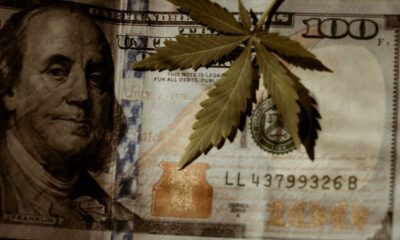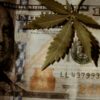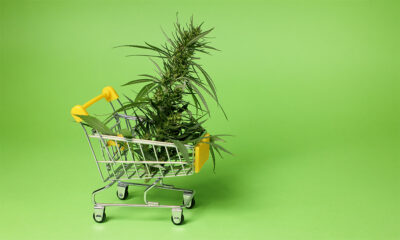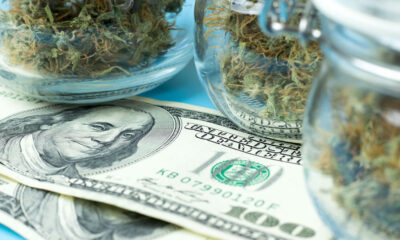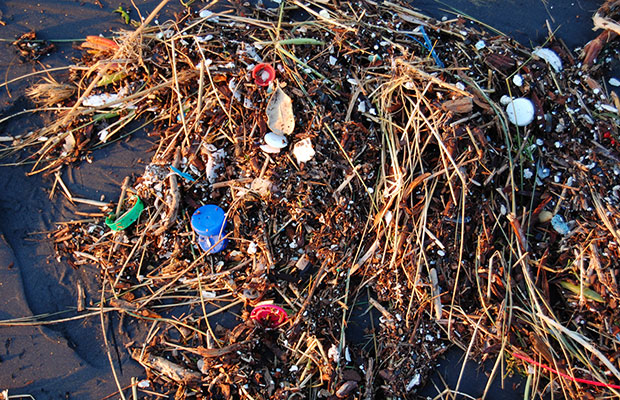
Economics
How Hemp Plastics Could Save the Economy While Saving the Planet
Far out in the most desolate, virgin blue waters of the Pacific Ocean is a post-apocalyptic soup of plastic garbage; soda bottles, Happy Meal toys, used condoms, nylons, computer bits, diapers and old appliances. The island, known as the Great Pacific Garbage Patch, was once rumored to be the size of Texas. Today, however, she has grown to a more developed island, twice the size of the entire United States with two major land masses and her own plastic sea.
Each great garbage patch, one in the east and one in the west, is a floating time capsule of human industrialism and ingenuity. The islands are nothing but plastic as far as the eye can see. They have become the stuff of legends, a depressing conversational anecdote and a reality so terrible it has simply become accepted as ugly but essential to modern living.
As the plastic swirls in this blender-like whirlpool it breaks down into smaller, brightly colored pieces that are eaten by fish and birds, many of whom die as their bodies fill up with plastic. But some go on living. The big fish eat the little ones and then those fish are eaten by humans, or ground up into fertilizers for land crops. Chemicals and petroleum in the plastics work their way through the food chain to humans where they may be causing cancer, infertility and a variety of other chronic or fatal diseases.
Yet, all over the planet corporations continue to make plastic products meant for short-term use, mainly because plastics are big business. The market incentives which created all of that plastic may not disappear soon, but there is another option; bioplastics—those made with plant oils rather than petroleum — offer a feasible solution. And of all bioplastics, hemp is the strongest and cheapest to produce. Could hemp be the answer and long-term solution to the plastic plague?
Plastic has permeated every part of existence, to the point that every human being today will live cradle to grave, surrounded in plastic. But the problem with plastics is that they never go away, ever; and now they are taking over Earth’s oceans.
Polyethylene is the most popular plastic in production; more than 80 tons of the material is produced annually. Polyethylene is used to make plastic food storage containers, bottles (everything from beverages to cleanings supplies), laminates and especially plastic bags. One trillion single-use plastic bags are consumed annually around the globe. One million bags are being used every minute. Each of these bags is used only for a matter of minutes, but take up to 1,000 years to degrade.
The plastic industry is highly secretive and largely unregulated. Much of the production process of the creation of plastic is considered “proprietary” and has therefore remained completely shrouded in mystery. Meanwhile, the plastics industry maintains strong ties with the energy industry — 4 percent of the world’s annual crude oil production goes into making plastics.
Hemp provides an excellent alternative to petroleum-derived plastics yet remains illegal (and therefore cost prohibitive) due to its association with marijuana. Hemp is non-psychoactive, meaning it causes no “high.” Despite this, growing hemp in the United States remains prohibited, although a new trend shows an easing in laws, which is promising towards a better economic future in which the useful crop is again produced domestically en masse. In such a market, hemp plastics may very well beat petroleum plastics in both quality and price. This is because hemp plastics are a better product than synthetics like polyethylene, and can be produced on the same machinery now used to manufacture the older, polluting technology. Soon, these machines may produce an alternative which is 100 percent biodegradable and 2.5 times stronger than synthetic plastics.
Currently, the largest producer of hemp in the world is China. China produces 50 percent of the world’s hemp, but mainly for fiber uses such as clothing. The largest supplier closest to the United States, where hemp is illegal to grow, is Canada, which has a booming hemp industry focused around the edible aspects of the hemp plant – its seeds and oil. No country is growing hemp with the explicit purpose of plastic production, although the first country that does is sure to reap the financial benefits of this massive industry of the future.
In 1941, Henry Ford designed a car made entirely of hemp, rather than steel, boasting that it could take up to 10 times the impact without denting. Imagine a Detroit today, fueled by hemp biofuel vehicles made of hemp plastic, in high demand in a dirtier world.
And the only hindrance is bad public policy.
Read more in Issue 10 of Cannabis Now Magazine












